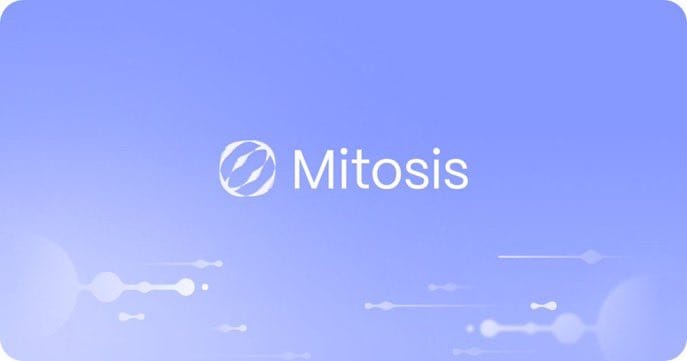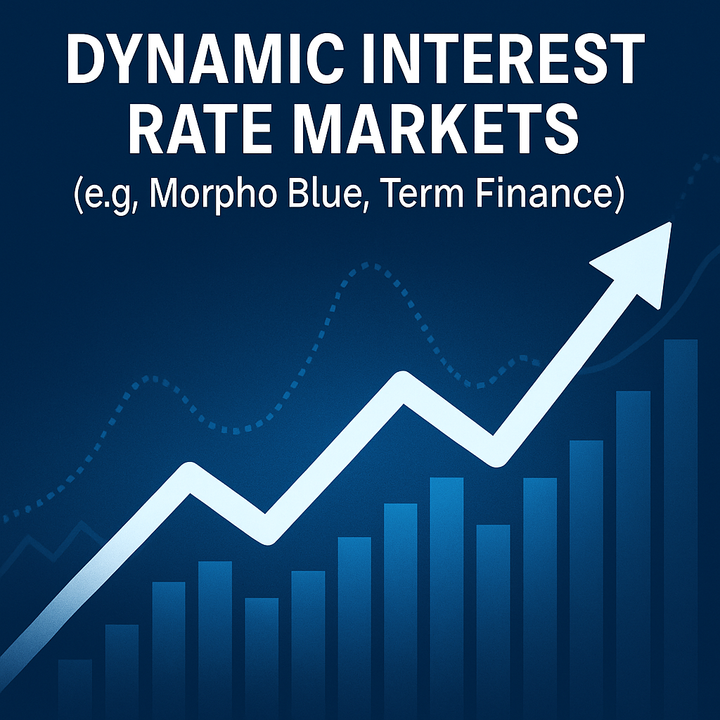Why Now Is a More Favorable Time for Token Generation Events (TGEs)

In the evolving crypto landscape of 2025, market conditions have aligned to make this moment particularly favorable for launching new tokens. Various blockchain projects – including Mitosis – are finding stronger investor appetite and clearer regulatory guidelines, creating a better environment for Token Generation Events (TGEs) than even a year ago. Below, we explore the key reasons behind this shift, highlight recent successful and unsuccessful TGEs, and compare how newly launched tokens are faring now versus 6–12 months ago.
Market Recovery and Renewed Investor Confidence
After a challenging bear market in 2022–2023, the crypto market has seen a significant rebound in 2024–2025. Institutional and venture capital investment is pouring back into the sector, signaling renewed confidence. In fact, the first half of 2025 saw $16.5 billion in crypto fundraising – already exceeding the $12.2 billion raised in all of 2024 . This resurgence has even outpaced the fundraising peak of 2021’s bull run, indicating that capital is flowing into crypto projects at record levels again. A major contributor to this optimism is the improving macro sentiment: Bitcoin’s 2024 halving and the approval of the first spot Bitcoin ETFs have helped ignite a new bull cycle, drawing more investors back into the market . As a result, overall demand for crypto assets is rising, which creates a more favorable backdrop for token launches now compared to late 2023.
Crucially, investor behavior has shifted towards quality over quantity. Rather than blindly speculating on any new token, investors in 2025 are concentrating larger sums into projects with solid fundamentals. The average crypto venture deal size has nearly doubled to ~$20 million, reflecting greater confidence in experienced teams and viable business models . Interestingly, a notable trend has been the rise of tokenless fundraising – about 82% of funded crypto projects in 2025 raised capital without immediately launching a token . This suggests that many teams are waiting for the right moment and focusing on building product first. For those projects that do proceed with a TGE, however, the current market momentum and investor interest mean there is a larger pool of capital and enthusiasm available now than there was 6–12 months ago.
Regulatory Tailwinds Create a Safer Environment
Another reason now is a prime time for TGEs is the improvement in regulatory clarity. Over the past year, major jurisdictions have moved towards clearer rules for digital assets, reducing the uncertainty that previously plagued token launches. For example, in the United States the proposed Clarity Act (alongside the GENIUS Act for stablecoins) marks a “turning point” by clearly defining digital assets, assigning proper oversight to regulators, and giving companies and investors a more reliable environment to operate in . This long-awaited structure means new tokens can be categorized (e.g. as utility tokens vs. securities) with specific compliance paths, rather than navigating a gray area. Likewise, frameworks like Europe’s MiCA and other global efforts are coming into effect, which collectively provide founders a regulatory roadmap for launching tokens within the rules instead of offshore in uncertainty.
This regulatory progress significantly lowers legal risks for new TGEs. Instead of fearing sudden enforcement or having tokens delisted due to ambiguous status, projects now have guidance on how to issue tokens in a compliant way . Investors, in turn, gain greater protection and confidence knowing that tokens launched now are more likely to follow disclosure standards or decentralization benchmarks where applicable. Overall, these policy tailwinds foster a more positive climate for token launches in mid-2025. Projects like Mitosis – which emphasize transparency and sound tokenomics – stand to benefit from a climate where adhering to best practices is not only easier but also valued by the community and regulators.
Successful Recent Token Launches
Even amid the cautious climate of the past year, there have been standout successes that illustrate how the right projects can thrive. A few examples of notable TGEs and their outcomes include:
- Arbitrum (ARB) – The layer-2 scaling project Arbitrum launched its token in early 2023 via a highly anticipated airdrop. Arbitrum’s TGE was one of the largest, with the project raising about $123.7 million and achieving a multi-billion dollar market capitalization on launch. The token garnered wide adoption due to Arbitrum’s strong user base, and it remains among the top crypto assets by market cap – a testament to launching with significant fundamental demand.
- Worldcoin (WLD) – Launched in mid-2023, Worldcoin conducted a high-profile TGE aimed at decentralizing digital identity. The project attracted major funding, raising around $240 million from investors. Upon launch, WLD saw massive public interest (with people lining up for iris scans to receive tokens) and its market valuation surged. While controversial, Worldcoin’s token debut underscored that ambitious projects with novel narratives can still capture the market’s attention.
- Solayer (LAYER) – In 2025, one of the few new tokens that delivered strong returns to investors has been Solayer. Since its February 2025 launch, LAYER’s price climbed about 88%, trading just under $2.00 as of April . This ~+88% post-TGE performance stands out at a time when many other new listings struggled. Solayer’s success has been attributed to its concrete utility and backing (it focuses on AI-driven solutions), proving that projects with real fundamentals can still perform very well even in choppy markets .
- Mantra (OM) – While not a brand-new launch, the DeFi project MANTRA demonstrated outsized gains through 2024, fueled by the narrative of real-world asset tokenization. OM tokens surged over 8,700% in 2024 , becoming one of the year’s top performers. This growth was driven by Mantra’s clear use case (RWA compliance infrastructure) and regulatory licenses, highlighting how aligning with a strong narrative and regulatory compliance can lead to explosive growth.
Each of these cases shows that when a project ticks the right boxes – genuine use case, strong community or backing, and reasonable token economics – the market is very receptive. Thanks to the generally bullish undercurrent in 2025, new token debuts that inspire confidence are seeing robust trading volumes and, in some cases, quick price appreciation. This is a stark contrast to late 2022, when even good projects often saw their tokens languish due to poor overall sentiment.
Unsuccessful TGEs and Key Lessons
On the flip side, it must be acknowledged that not every token launch is thriving – in fact, many have failed to meet expectations, offering important lessons for projects like Mitosis preparing a TGE. A recent analysis noted that in the first few months of 2025, 45 new tokens launched and most failed to provide decent returns to investors . Numerous newly listed tokens in 2025 saw their prices drop shortly after listing and struggled to sustain any growth. This wave of underperforming TGEs has been attributed to a combination of excess supply and weak fundamentals. As Vincent Liu of Kronos Research observed, “Relentless token launches, especially meme coins, diluted liquidity and fragmented investor attention. Simultaneously, macro headwinds like rising interest rates and a global shift to risk-off sentiment throttled speculative capital” . In essence, too many low-quality or purely speculative tokens were coming to market, and investors quickly became skeptical, dumping tokens that lacked real utility.
One dramatic example of boom-and-bust was Celestia (TIA). Celestia’s modular blockchain technology made its late-2023 TGE highly anticipated – and indeed the token initially surged from about $2 at launch to over $21 by January 2024 . However, this steep hype-driven rally was short-lived. As large token unlocks hit and hype cooled, TIA plummeted over the subsequent months; by mid-2025, it was trading around 90% below its peak value . Many investors who bought near the top were left with heavy losses. The Celestia case underlines how even a promising project can see its token collapse in value if the initial valuation was divorced from fundamentals or if supply dynamics are unfavorable.
The key takeaways from the less successful TGEs are clear. First, hype alone cannot sustain a token’s value. The Simplicity Group’s study of 40 token launches in early 2025 found no positive correlation between social media buzz (likes, posts, etc.) and post-listing price performance . In fact, projects with the most viral pre-launch hype often performed worse in the weeks after the launch, perhaps due to overinflated expectations . Second, initial token metrics like a bloated fully diluted valuation can doom performance – the research noted a strong negative correlation between a high initial market cap and subsequent returns . Projects that set a relatively low initial market cap (IMC) and float often saw healthier price “pumps” in the first week or month , whereas those starting at lofty valuations left little upside for new buyers. Finally, liquidity and volume retention matter; tokens that quickly lose trading volume after launch tend to sink in price . These lessons emphasize that a successful TGE in 2025 requires right-sizing the offering and cultivating real engagement, not just short-term hype.
Performance Now vs. 6–12 Months Ago
The landscape for new tokens has evolved noticeably from a year ago. When comparing the last 3 months (roughly Q2 2025) to 6–12 months ago (late 2024), we see some contrasting trends. In late 2024, the crypto market was just beginning to recover from the bear cycle, and there were pockets of speculative frenzy. For instance, certain meme coins and niche altcoins went on extraordinary runs – Fartcoin, a memecoin launched in Oct 2024, astonishingly rocketed by over 1.84 million percent by that year’s end amid a post-election rally . Similarly, serious projects with strong narratives saw huge surges; the aforementioned Celestia and Mantra are examples of late-2023/2024 launches that achieved rapid price peaks (500–1000%+ gains) during the initial hype phase. However, many of those gains proved unsustainable, as the market was still fragile. By early 2025, several of 2024’s high-fliers had crashed back down to earth, and investors had grown more discerning.
In the past 3 months (spring-summer 2025), new token launches have, on average, shown more tempered performance but arguably more stability. The frenzy of “buy anything” has given way to a more selective environment. As noted, a majority of tokens launched in 2025 so far did not deliver positive returns – a stark difference from mid-2024 when even dubious meme coins could temporarily soar. This implies that while the overall market is stronger now, simply launching a token is not enough to guarantee success. Projects that went live in recent months needed to prove their worth or quickly get ignored by the market. The result is that we haven’t seen as many extreme pumps in mid-2025 as we did a year ago, but the projects that do gain traction now tend to have more substance behind them.
From a comparative standpoint, one could say that late 2024’s token launches experienced higher volatility (both upside and downside), whereas 2025’s recent launches show a healthier filtering, with only fundamentally solid tokens doing well and many weak ones failing fast. Importantly, market conditions overall are more favorable now – the difference is that investor discipline has also increased. For a project like Mitosis planning a TGE, this is actually positive: it means if the project can demonstrate real value, it is more likely to stand out now (since fewer people are chasing purely speculative plays). Meanwhile, the broader liquidity in the crypto market is better in mid-2025 than a year ago, so successful launches have more room to grow before hitting speculative ceilings.
Token Categories That Are Excelling
Even as general interest returns to crypto, some sectors are clearly outperforming others in terms of token launch success. Currently, infrastructure and innovation narratives are leading the pack:
- Artificial Intelligence (AI) and Crypto: AI-linked tokens have been a hot trend since 2023 and continue to show strength. Despite a lackluster altcoin season in early 2025, niche categories like AI-integrated tokens maintained strong demand . The combined market capitalization of crypto AI tokens jumped from just ~$2.7 billion in April 2023 to over $36 billion by mid-2025 . Projects at the intersection of AI and blockchain (for example, BitTensor’s TAO token, a decentralized AI network token) have surged in value – TAO rose ~17% over the last year, reaching about $425 and becoming the most valuable token in the AI crypto space . New token launches that leverage AI themes or technology are riding this wave of interest.
- Layer-1 and Layer-2 Blockchains: Scalability and new blockchain platforms remain a focus. Successful L1/L2 token debuts (like Arbitrum’s noted launch) show there is appetite for technologies that improve throughput or enable new ecosystems. In mid-2025, attention is on upcoming launches such as Linea, a ConsenSys-backed Ethereum Layer-2 whose TGE is highly anticipated due to its potential to bring “years of powerful growth” in Ethereum’s scalability . Tokens in the L2 space tend to perform well if they launch when demand for lower fees and faster transactions is high.
- DeFi and Real-World Assets (RWA): The decentralized finance sector is also seeing a renaissance. A large share of crypto funding in 2025 has gone to finance-related projects (CeFi/DeFi), which took in 51% of total investment ($4.9B across 171 deals) in H1 2025 . Tokens enabling real-world asset tokenization have shone particularly brightly: besides Mantra’s huge 2024 run, platforms like Ondo (focused on tokenized treasuries and bonds) delivered impressive gains (+1,758% in 2024) . This indicates that the market currently rewards tokens that bridge crypto with real-world finance, as they tap into tangible economic value. By contrast, purely gaming or metaverse tokens have been less in vogue recently compared to the DeFi, AI, and infrastructure narratives.
In summary, tokens related to AI, scalability (L1/L2), and real-world financial integration are performing better than those in more speculative or saturated niches. For new projects, aligning with one of these strong narratives – authentically, with solid tech and partnerships – can significantly boost the odds of a successful TGE in the current climate.
Conclusion
All factors considered, now is arguably the best time in recent memory for crypto projects to launch their tokens – provided they do so thoughtfully. The market has regained an optimistic footing, with ample capital and participants eager for the next big opportunity. Regulatory clarity is reducing the fear and doubt that previously shadowed token sales, allowing teams like Mitosis to approach their TGE with clearer guidance and confidence in compliance. Most importantly, the shakeout of the past year has made investors more savvy: today’s market favors projects with real innovation and strong fundamentals.
For Mitosis and other emerging projects, this convergence of positive market sentiment and discerning investment mindset is ideal. It means a well-prepared TGE can attract enthusiastic support and long-term holders, rather than just short-term speculators. Of course, the lessons of recent failed launches remind us that execution matters – setting realistic valuations, building genuine community engagement, and delivering utility are all crucial to capitalize on the favorable conditions. By learning from past examples and leveraging the current tailwinds, new tokens launched now have a solid chance to outperform those from a year ago. In essence, the crypto industry’s growing maturity in 2025 is creating fewer but better token launches – and projects like Mitosis are poised to thrive by launching in this more nurturing environment.
🌐 Useful Mitosis Links
- Mitosis Litepaper — Learn the vision behind Mitosis, modular rollups, and their economic design:👉 https://docs.mitosis.org/docs/learn/litepaper
- Mitosis Blog — Explore updates, ecosystem news, technical breakdowns, and RaaS strategies:👉 https://blog.mitosis.org/
- Mitosis Link3 Profile — Quick access to Mitosis socials, campaigns, and ecosystem touchpoints:👉 https://link3.to/mitosisorg


Comments ()